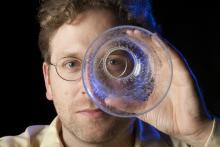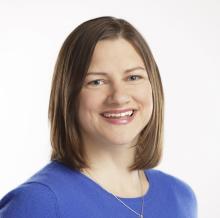Despite thousands of years of history, glass still challenges our perceptions and definitions. In this lecture, Drs. Charbonneau and Larson tackle “the glass problem”, to explore and understand the mutable properties of a material which is, by definition, disorderly.
When man-made glass was invented more than 3,500 years ago, it was closely related to precious stones aesthetically, linguistically, and functionally. Gradually, people began to recognize and exploit the unique properties of glass. This ancient exploration helped stimulate the discovery of glass blowing and the widespread adoption of glass in daily life in the 1st century BCE. This phenomenological evolution, in which glass came to be recognized as a distinct class of materials with its own essential characteristics, eventually resulted in the development of the optical-quality glasses which enabled the Scientific Revolution, as well as the glass screens and fiber optic cables which power our contemporary Information Age.
While the working properties of glass are now well understood and technologically exploited, glass continues to defy a satisfactory atomic-level description. The existence of a glass relies on organizational principles different from those of ordered solids. The transition into a glass is likewise an entirely different phenomenon than the transition into a crystal. These observations pose fundamental questions: is there a limit of absolute disorder that is the opposite pole from the perfect order of a crystal? How does this disorder control material properties? Much like experimentation with vitreous materials transformed the meaning of glass in the ancient world, a deeper understanding of glassy solids raises the prospect of new principles for designing matter.

Patrick Charbonneau
Patrick Charbonneau received a PhD in chemical physics from Harvard University and was then a Marie-Curie Postdoctoral Fellow at FOM-Amolf in the Netherlands, before joining Duke University in 2008, where he is currently Associate Professor of Chemistry and Physics. An expert in numerical simulation and theory, Charbonneau studies the assembly of various colloidal and molecular systems, protein aggregation, as well as the glass problem.

Katherine Larson
Katherine Larson is Assistant Curator of Ancient and Islamic Glass at the Corning Museum of Glass. Larson’s research focuses on ancient glass technologies and changing practices of glass production and consumption over time. She serves as a glass specialist for archaeological excavations in Israel, Greece, and Turkey. Larson holds a Ph.D. in classical art and archaeology from the University of Michigan.
St. Jerome's University
University of Waterloo, Faculty of Arts
University of Waterloo, Faculty of Mathematics
University of Waterloo, Faculty of Science